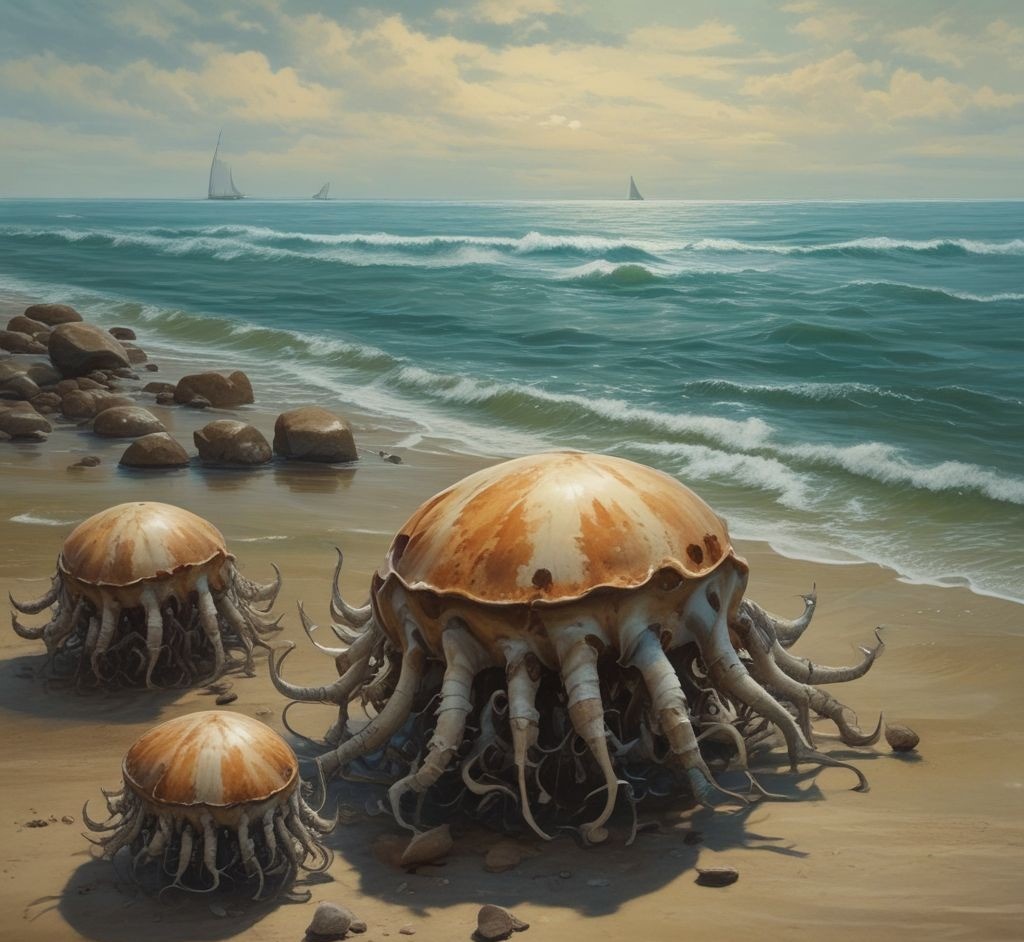🦠 All About the Barnacle
The sticky sea creature that lives in a shell and never lets go! 🌊🪸🌀
📖 Quick Overview
| Feature | Details |
|---|---|
| Animal Name | Barnacle |
| Habitat | Ocean coasts, rocky shores, boats, whales, and piers |
| Food | Tiny plankton from the water (Filter Feeder) |
| Group Name | Cluster |
| Baby Name | Nauplius (larva) |
| Special Skill | Sticks to surfaces for life and filters food with legs! |
| Danger Level | Not dangerous 🟢 |

🌟 What Is a Barnacle?
A barnacle is a tiny sea creature that lives inside a shell and attaches itself to hard surfaces forever!
It might look like a rock or bump, but it’s actually related to crabs and shrimp!
They have:
- A hard cone-shaped shell
- Feathery legs (called cirri) that reach out to grab food
- Super-sticky glue (one of the strongest in nature!)
- A tiny body that hides safely inside
📍 Where Do Barnacles Live?
Barnacles live in saltwater oceans all around the world.
🌊 Habitat:
- Rocky seashores and tidepools
- Boat hulls and ship bottoms
- Whale skin and crab shells
- Docks, piers, and buoys
They love places with strong waves and moving water!
🍽️ What Do Barnacles Eat?
Barnacles are filter feeders, meaning they eat whatever floats by!
🍴 Favorite foods include:
- Plankton
- Tiny algae
- Microscopic sea creatures
They wave their feathery legs in the water to catch food and bring it to their mouths.
👨👩👧👦 Family and Groups
Barnacles often live in big clusters.
👶 Baby Barnacle = Nauplius (Larva)
- Starts life as a tiny swimming creature
- Floats around until it finds a good spot
- Sticks itself down and never moves again!
💪 Brilliant Barnacle Powers
- Makes nature’s strongest glue (even underwater!)
- Survives harsh waves, heat, and cold on the shore
- Eats without moving
- Can close its shell to stay safe and wet during low tide
- Lives on whales, sea turtles, and boats!
💡 Fun Facts About Barnacles
- They’re crustaceans, like shrimp and lobsters
- The glue they make is stronger than super glue!
- Charles Darwin studied barnacles for 8 years
- Some barnacles only grow on whales or sea turtles
- They’re used by scientists to track ocean movement
🛑 Are Barnacles in Danger?
Not usually! But they can be affected by:
- Pollution and oil spills
- Changes in ocean temperature
- Being scraped off boats and docks
💚 How Can We Help?
- Keep oceans clean and healthy
- Avoid polluting shorelines
- Respect tidepool life—look, but don’t touch!
- Support marine science and education
✏️ Activity: Make a Barnacle Rock Craft!
🎨 Use a rock, cotton balls, and paper to:
- Glue “barnacles” onto a pretend rock
- Add little paper legs peeking out
- Draw ocean waves around them
- Give each barnacle a funny name!

✅ Summary
| 🗂️ Category | 🦠 Barnacle |
|---|---|
| Type | Crustacean (related to crabs and shrimp) |
| Diet | Filter Feeder (plankton and tiny sea bits) |
| Habitat | Oceans, rocks, boats, whales, docks |
| Group | Cluster |
| Special Skill | Sticks for life and feeds with feather-like legs |
| Danger Level | Not dangerous 🟢 |